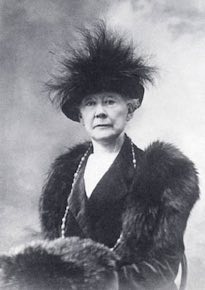In the nineteenth century many young women of wealthy background dabbled in painting to while away their leisure hours. Mary Cassatt took it seriously. She came from a well-to-do family and lived in Europe for several years when she was a child.
When, at twenty-two, she declared she could learn no more in Philadelphia, her parents let her return to Europe. In Rome, Seville, Antwerp, and Paris, she studied the masters’ techniques. She sharpened her skills by copying Correggio, Rubens, and Franz Hals. Cassatt was in Paris at that extraordinary moment when the Impressionists first overturned established artistic standards. They recognized in her a kindred spirit and a powerful talent, and she was invited to exhibit in the Impressionist shows. “I accepted with joy,” she recalled. “I took leave of conventional art. I began to live.”
She never married. In 1877 her parents moved to Europe to join her, and for the next eighteen years she was obliged to devote some of her time to their care. Surrounded by bourgeois respectability, she painted what she saw: interiors, gardens, and portraits, especially of mothers and children.
Mary Cassatt was self-disciplined, intense, and outspoken. She never did commissioned portraits, accepted no pupils, and refused to paint “pot-boilers.” Her influence on American art carried beyond her own work because she gave advice to American art collectors. The famed Havemeyer collection, now part of the Metropolitan Museum of Art, began when Mary Cassatt convinced young Louisine Havemeyer to spend all her schoolgirl allowance on a Degas pastel.

